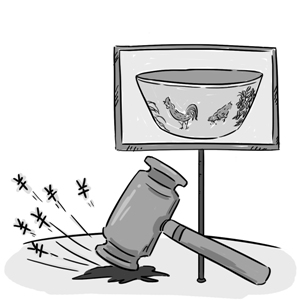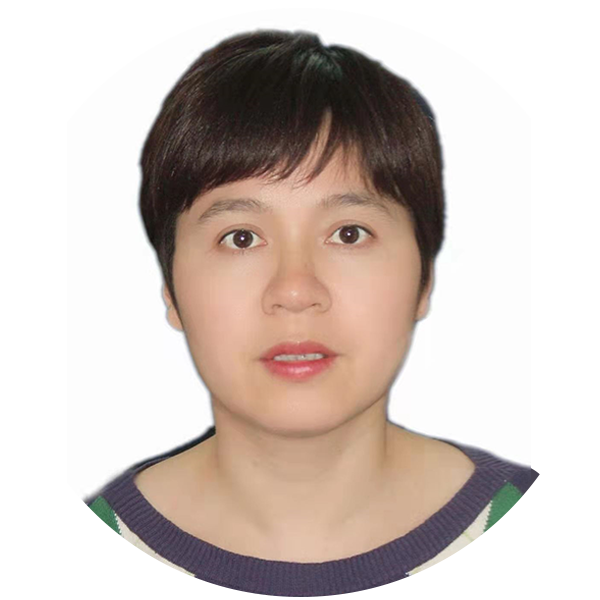
Illustration: Chen Xia/GT
This Wednesday, three expat teachers were taken from an unregistered kindergarten in Xuhui district by police officials. The majority of the kids enrolled there are from expat families, especially the French community. Besides the registration issues of the organization, the question of whether the expats had the necessary teaching certificates and work visas also needs to be answered.
On Tuesday, a town official was quoted by local media as claiming that the sinking ground that has caused serious damage to several buildings in a residential compound in Putuo district was caused by the construction of a nearby metro line. With buildings in neighboring Zhejiang Province having collapsed, burying people, this news gained much public attention.
But when I talked with my foreign friends about the big Shanghai news items of the week, many mentioned the purchase of a Ming Dynasty (1368-1644) porcelain cup by Shanghai collector Liu Yiqian for more than $36 million at an auction in Hong Kong. The cup will be displayed at Liu's Long Museum in Shanghai, according to Sotheby's, the auction house which arranged the deal.
The tiny cup bears the images of a rooster, a hen and chicks in grassland. The peak production period of such cups was under the reign of the Chenghua emperor (1465-1487). According to Sotheby's, there is thought to be no more than 20 of these so-called "chicken cups" still in existence, four of which are in private collections. The newly auctioned one will be the first to return to China.
When Chenghua was a boy, his father - who was then emperor - was detained by enemy forces. Chenghua's uncle seized the throne and deprived the then 5-year-old Chenghua of his title of prince. Young Chenghua was left in the care of a 24-year-old woman surnamed Wan, who would later become Chenghua's favorite concubine. Chenghua regarded Wan as half mother, half wife. Chenghua finally attained the throne in 1465. The chicken cup was a favorite of Wan's, and it is claimed Chenghua liked the image of harmony embodied by the chicken tending to her offspring. Thus he ordered the official ceramics workshops in Jingde town in Jiangxi Province to produce royal chicken cups for him.
There are different types of chicken cup. But the consensus is that Chenghua-era chicken cups represent the highest standards of such products.
Liu Yiqian is not a new name to the worlds of art and antique collecting. According to media reports, Liu has a personal fortune estimated at $1.6 billion. Other accounts put his wealth at $900 million. He has two museums to his name. He made headlines in the art world when he bought a Song Dynasty (960-1279) scroll, Gongfu Tie, for $8.2 million at a Sotheby's auction in New York last September, only for it to be dismissed as a fake by experts. He firmly stands by the scroll's authenticity. The debate still has not reached a conclusion as both sides still present new academic evidence supporting their viewpoints.
One of Liu's museums, Long Museum in Shanghai's Xuhui district, saw its grand opening recently to widespread press coverage and promotion. Gongfu Tie is the museum's centerpiece. The chicken cup will be another huge draw to the museum, according to Sotheby's.
We see stories about Liu in both Chinese and English media. Born in 1963, Liu dropped out of middle school and became a taxi driver in Shanghai. Through savvy investing in the stock market in the 1980s, he became one of the richest men in the country.
With Gongfu Tie and the chicken cup, Long Museum will attract many visitors to stump up its 50 yuan ($8.05) entrance fee. This will help Shanghai become a truly international city. Every top city in the world has unique cultural venues. In London or New York, visitors find it impossible to see even a fraction of all the wonderful museums and items on display in just one trip. Private museums can be helpful supplements for art lovers, and they provide good opportunities for the general public to appreciate treasures that were once only available to the rich and powerful. Even if the Gongfu Tie is fake, it is still good for people to see a piece that fetched such a high price.
Shanghai has many cultural venues that are free to the public, while there are also museums that charge an entrance fee. With more such venues, people can enjoy a richer life. Hopefully, we will see more world-famous precious items on display in the city.
The author is the managing editor of Global Times Metro Shanghai. fengyu@globaltimes.com.cn

